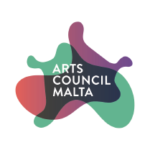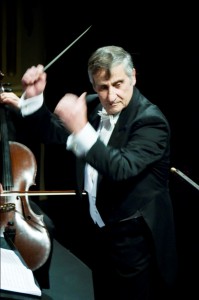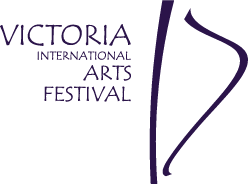A brilliant start to VIAF 2015
Yesterday evening, a packed St George’s Basilica was regaled to a most wonderful concert which, as one patron described it, was “not for the fainthearted.” By this, he understood that such was the intellectual challenge of the programme that there wasn’t a moment’s respite with regard to the demands it made on the listener.
Rev. George Frendo, Assistant Artistic Director of VIAF, welcomed the audience with a short address, stressing the cultural importance of such a project and bringing to light a few statistics about this year’s edition that makes one wonder how such a massive Festival is possible on the tiny island of Gozo.
The Malta Philharmonic Orchestra, most ably led by Emilia Wisniewska, was in fine fettle and responded intelligently to Joseph Vella’s assured, mature and acute reading of the scores. Starting with Debussy’s Danse sacrée et danse profane L. 103, performed by MPO’s harpist Britt Arend, this was a master class in elegance, refinement and beauty. Britt possesses a sound musicianship that bespeaks of excellent breeding, one that is sophisticated and understated, and this came out in an all but magical rendering of one of Debussy’s best-loved works. The string section of the orchestra provided the much-nuanced tones and support, and balance between soloist and ensemble was always impeccably maintained.
Next came one of the evening’s world premieres by Joseph Vella. Speaking to the audience about ‘Ode on a Resurrected Violin’, op. 137, the composer has this to say about it: “Many years ago a friend of mine handed me a box with the ‘remains’ of a violin. The violin, which used to belong to his great grandfather, a violinist at the old Opera House in Malta, had literally come apart. Not only this, but e few pieces were missing. One day I had the idea to ask my good friend Dr George Debono, who, as a hobby, does excellent restoration work on antique musical instruments, especially string ones, whether he thought he could do something with this jumble of violin parts lying in the box. He straightaway took up the challenge and what you are hearing being played this evening is the end result. We were both very happy and George suggested that I should write a piece specially for the occasion. Hence, the Ode on a Resurrected Violin which is dedicated to him.”
As the title implies, the music is a paean of praise to the painstaking and inspired work that goes behind restoration. The discrete pieces of the ‘useless’ violin have been re-assembled not as patchwork, but as a new-made whole, and the piece is scored for solo violin and string ensemble, to further enhance the cantabile quality of the instrument’s texture. Pierre Louis Attard rose to the challenge of performing on the resurrected violin most admirably, despite the fact that it must have presented him with a few technical challenges. Projection was effortless and the rapport between the string ensemble and soloist was a seamless one. Performing from memory, this young and extremely talented musician performed with confidence, restraint and assurance. Perfect intonation and elegant phrasing were hallmarks of this piece. The ‘cantabile’ singing line was well engaged with and the result was a most delectable one.
Following hot on the heels of the first world premiere was the second one of the evening, namely, Vella’s new song cycle Dust on the Path for Soprano and Orchestra op. 138. Inspired by the ravishing poetry of the late Alistair Chalmers, Joseph Vella saw the potential of writing a song cycle that expresses the full gamut of human emotion. Using his idiosyncratic language with that wonderful dose of lyricism which is so much Vella’s own, the finished product is a gem. It also goes to prove that the music validates the authenticity of the poetry when that poetry is true and beautiful: the inverse is true as well. It is a dialogic exchange, a panaesthetic movement between the arts.
Leading Maltese soprano Miriam Cauchi rose magnificently to the occasion and her interpretation of what is, both technically and musically a most difficult work, was one that is not likely to be forgotten in a hurry. Blessed with a beautiful, rich and most expressive voice she can tackle a wide range of repertoire. However, blessed even more with a musical intelligence enables Miriam, who is more ingrained in the Romantic repertoire of opera and Leider, to sing such a contemporary piece with panache and confidence.
Vella’s idiom is as unmistakable as it is inimitable and the more he composes the more new he sounds. His resources seem to be indefatigable. (Long may it last, I hasten to add!) He is gifted with a formidable sense of structure and this provides the rational, neo-classical style he generally employs in all his compositions. Treating the voice with the expertise he is renowned for, he creates a wonderful canvas of kaleidoscopic colour, emotional tension and release, and intellectual engagement with a very powerful text. Whether expressing exuberance or despair, love or disenchantment, climax or bathos, there is an relentless urge for fulfilment that is never quite resolved. I felt it was more dissolved than anything else. The scoring for the orchestra is vibrant and endlessly interesting. Knowing precisely what each instrument is capable of, Vella brings out the best from the orchestra and the work came across as exciting, fresh, powerful and most intense. It is a most fitting tribute to the young poet. The applause at the end was a spontaneous and glowing one, and one could feel the collective appreciation for a great work that one hopes to hear again, sooner rather than later.
The concert came to a fitting close with one of the twentieth century’s most formidable symphonies, namely, Paul Hindemith’s Mathis der Maler. This is the second time that this monumental work was performed on the islands; the previous one was also performed by MPO conducted by Joseph Vella at the Manoel Theatre a few years ago. Falling into a tripartite structure, to reflect Grünewald’s masterpiece, the Isenheim Altarpiece, a panelled triptych, the work unravels as a powerful, tightly-wrought and profound narrative. Despite making serious demands on the orchestra, the players were intellectually and emotionally supremely well-coordinated and the intensity they managed to transmit was at moments almost unbearable. The homogeneity of the strings, the brilliance of the woodwind, the formidable presence of the brass, not to mention the precision and clarity of the percussion – this was one work that attested to the musical advancement of the players and the ability of the conductor to coax the best out of an orchestra. The ending was apocalyptic, in intensity rather than volume, and the resounding applause at the end was a most deserved one. A truly outstanding performance.
This was a great way to start a Festival that contains 35 musical/artistic events. Over drinks in an after-concert little party, one of Malta’s most renowned critics said: “Vella’s talents never cease to amaze me. He is always creating, and not only as composer but also as conductor. His programmes are endlessly interesting; he does not fear challenges and for as long as I can remember every big, new work that I got introduced to in Malta was always through him.” In fact, one could notice the seamless texture of the programme; all four pieces blended beautifully despite the differences amongst them. It was also noted that the audience was an extremely cultured one – you could hear a pin drop throughout and at no point was there an attempt (not even an aborted one) at applauding in-between movements or in-between the songs in the Song Cycle.
We look forward to more!





